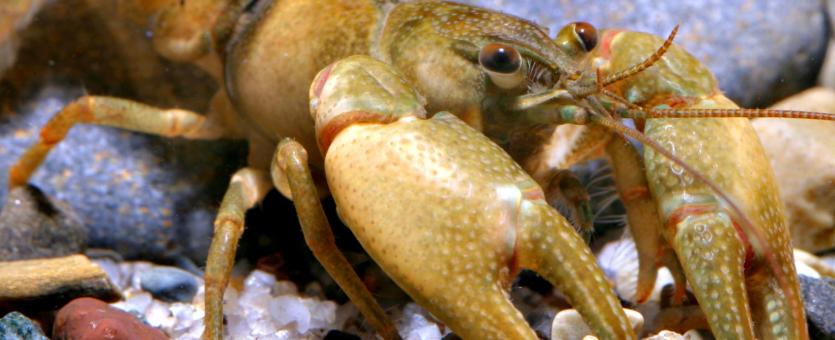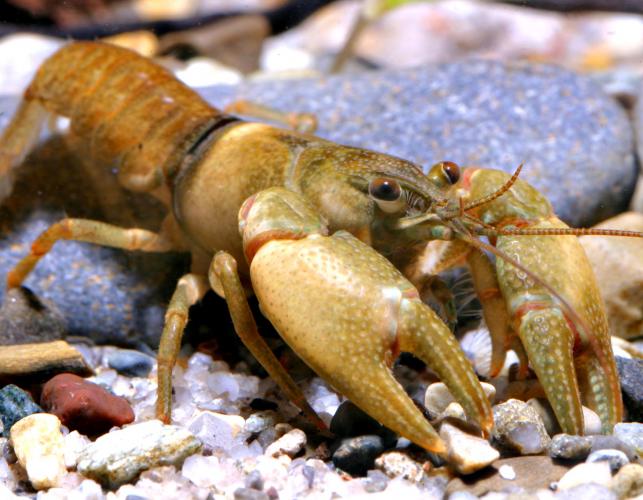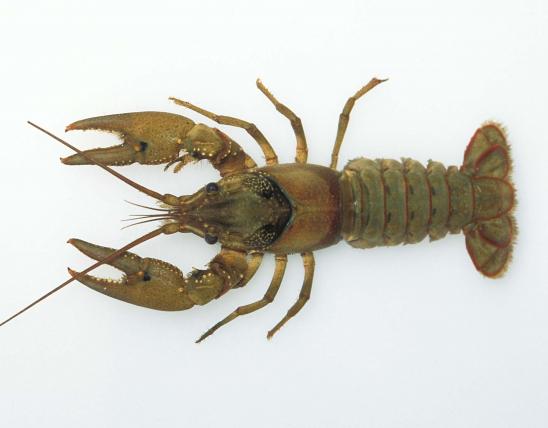
The Neosho midget crayfish is small and is a subdued mottled brown or olive tan, without bright markings but with a prominent black or dark brown band crossing the carapace near its junction with the abdomen. The body is stout, and the pincers are broad and powerful. Sometimes the pincers are tipped with orange or yellow. This is the only small brown crayfish that occurs in the Spring and Elk river systems. Other species in these drainages achieve a larger size, are more greenish, and have conspicuous black rings or whitish tubercles on their pincers.
Adult length: about ¾ inch to 2 inches.

The Neosho midget crayfish has a very localized distribution in the Spring and Elk river systems of the southwestern Ozarks. In this area it is one of the most abundant crayfish. It also occurs in parts of Kansas, Oklahoma, and Arkansas.
Habitat and Conservation
The Neosho midget crayfish lives in clear, permanent-flowing Ozark streams over a firm gravelly or rocky substrate in swift, shallow water. It digs short tunnels in areas of small gravel or beneath rubble or boulders. It spends much of its time in cavities beneath rocks or in its tunnels. It is not an agile or strong swimmer.
Food
Crayfish are generally omnivores, eating a wide variety of plant and animal materials.
Life Cycle
As with most other Ozark crayfishes, this species apparently has a fall and and early winter breeding season. They probably reach adult size during their first year of life.
Human Connections
In addition to feeding many types of wildlife, crayfish provide food for many species that humans hunt and fish. Crayfish commonly serve as fish bait, and many people eat crayfish, too. Crayfish are fascinating, colorful creatures and are part of our rich native heritage.
Ecosystem Connections
Crayfish are an important link in the food chain between plants and other animals, breaking down plant materials that are resistant to decay. Crayfish in turn are an important food for many other animals. Presence of crayfish in a stream or pond usually indicates good water quality.
























